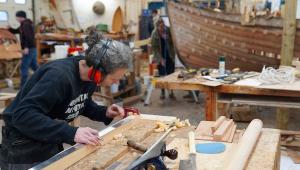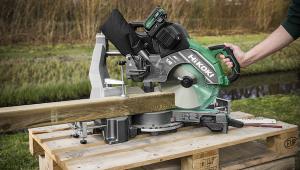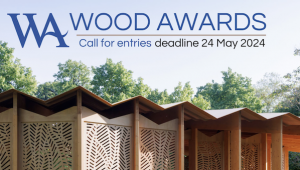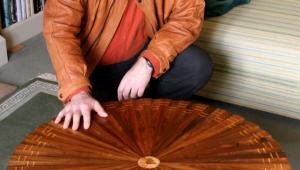Wood Awards winners 2021
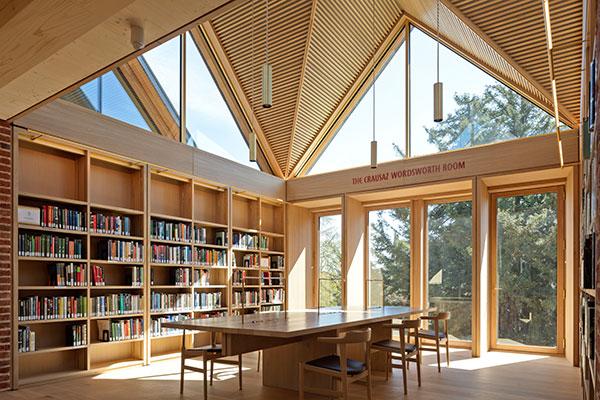
Six structures and two product designs were recently announced as winners of the Wood Awards 2021 at a ceremony held at The Building Centre in London. Established in 1971, the Wood Awards is the UK’s premier competition for excellence in architecture and product design in wood.
The competition is free to enter and aims to encourage and promote outstanding timber design, craftsmanship and installation. The independent judging panel visits all the shortlisted projects in person, making this a uniquely rigorous competition.
The Awards are split into two main categories: 'Buildings' and 'Furniture & 'Product'. Within the Buildings category there are five subcategories as well as a 'Structural Award'. 'Furniture & Product' is split into 'Bespoke' and 'Production'. 'The Gold Award' is given to the project that the judges deem to be the winner of winners.
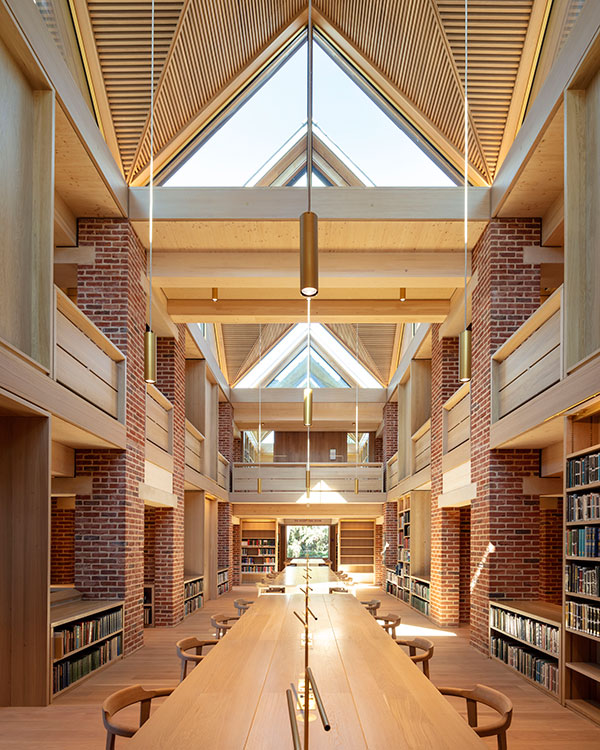
GOLD AWARD & EDUCATION & PUBLIC SECTOR WINNER – Magdalene College Library
The judges chose Magdalene College Library as this year’s Gold Award and Education & Public Sector category winner. Judge Jim Greaves commented: “Magdalene College Library is a tour de force of architectural design and achievement. The different forms of the reading rooms are beautiful and experienced sequentially as they lead one through the building. The brick, timber and stone has been exquisitely designed with a thorough understanding of their intrinsic qualities."
Magdalene College Library is the first substantial addition to the main college site in over 50 years. Built alongside the Grade I listed Pepys Library, the new library is an arrangement of simple brick volumes with timber windows and pitched roofs that echo the gabled architecture of the college. Interconnecting rooms lined with bookcases, reading desks and galleries are arranged on a tartan grid between linking passageways.
Three main reading rooms organise the principal circulation route, from the three-storey entrance hall to a double-height central reading room, up to a long single-height room at the top of the building. The stepping of these spaces in section is followed by the stepping of the plan form, allowing the building to address the differently scaled garden space either side. The interior spaces are created by a glulam and CLT structure, supported on load bearing brickwork and populated with oak shelves and tables. All the key features are perceived as an interwoven set of elements.
Roof lights, columns, floor beams, shelves, windows, desks, and balustrades form a coherent warp and weft throughout the space. The roof is a grid of timber lanterns with glazed gables separated by wide internal gutters. The lanterns limit glare and overheating while bringing light into the plan. The roof lanterns are supported by brickwork chimneys that provide fresh air circulation.
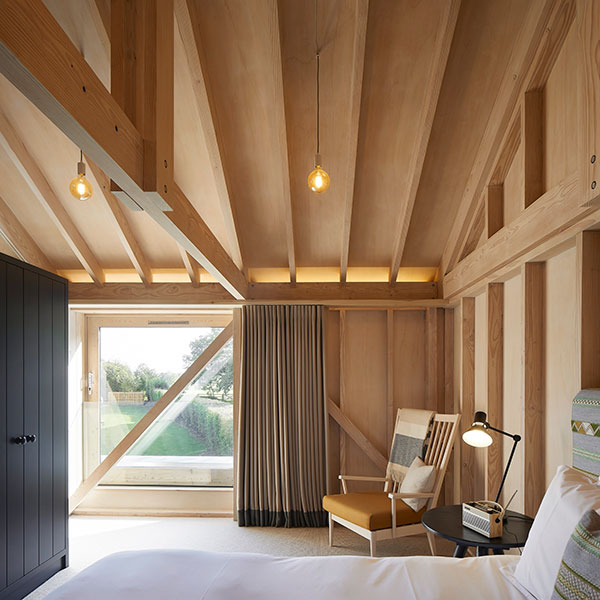
COMMERCIAL & LEISURE – The Alice Hawthorn
The Commercial & Leisure winner is The Alice Hawthorn. Judge Ruth Slavid commented: “This is modest architecture in a highly achieved manner, with everything thought through carefully. It achieves the desired agricultural character, but this is an agricultural building with a level of sophistication never seen before. The result is a series of delightful buildings where all the judges who saw the project would love to stay.”
In medieval times, Nun Monkton was an important river hub with many travellers staying overnight. In recent years, the village’s last remaining pub, a critical community meeting point, had come under threat. This community-led project transforms the pub’s sustainability with the addition of twelve guest bedrooms, eight of which use an entirely timber frame construction centred around a new courtyard. The design takes its inspiration from the Norse ‘garth’ (‘grassy cloister’ or ‘clearing in the woods’), creating a sense of quiet enclosure and a notional extension of the village green being a place of gathering.
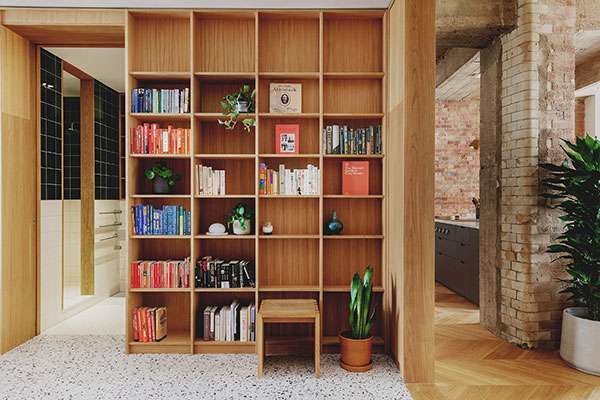
INTERIORS – St John Street
The Interiors winner is St John Street. Judge Jonas Lencer said: “I was impressed by the light touch interventions, which gave the warehouse apartment a new identity. The project stands as an example for continued use of a long-lasting, but carbon intensive brick and concrete structure supported by high quality timber interiors.”
This large Victorian apartment was acquired as an empty shell with an industrial palette of exposed brickwork and concrete. It has been reimagined as a warm, inviting home that retains the building’s industrial character. A series of contemporary interventions are distinct from the existing fabric, with carefully crafted joinery running throughout. The apartment opens directly into the library space, a rectangular room lined sentirely in solid oak joinery.
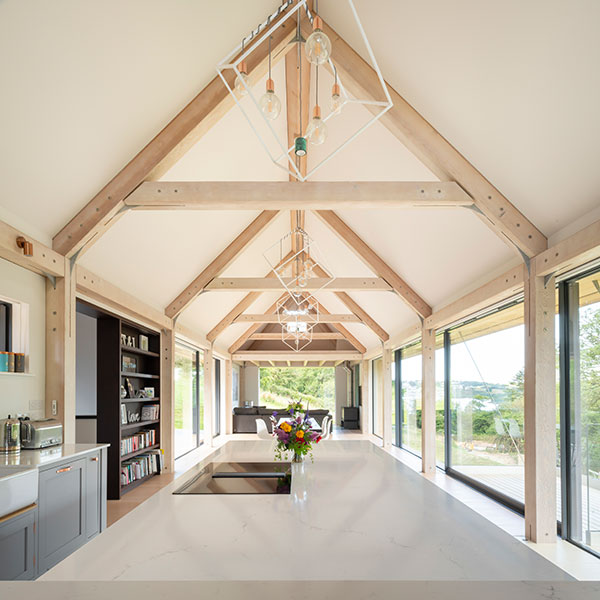
PRIVATE – The Boathouse
The judges selected The Boathouse as the Private winner. Judge Kirsten Haggart commented: “A fabulous hand-built home with a wonderful story. The use of local materials, except for the two Canadian spruce trees, and local labour overseen by the owner, a craftsman with attention detail and a rigour in his approach, make this a worthy winner."
This practical family residence respects the outstanding natural beauty of its surroundings and looks out over the Salcombe Estuary. Natural materials are at the heart of the project. Geometry and materials are expressed in different ways on different floors. Below-ground, the emphasis is on stone and natural curves, from a curved bench and coat rail to curved doors. Above-ground is straight, with timber and deliberately man-made materials used.
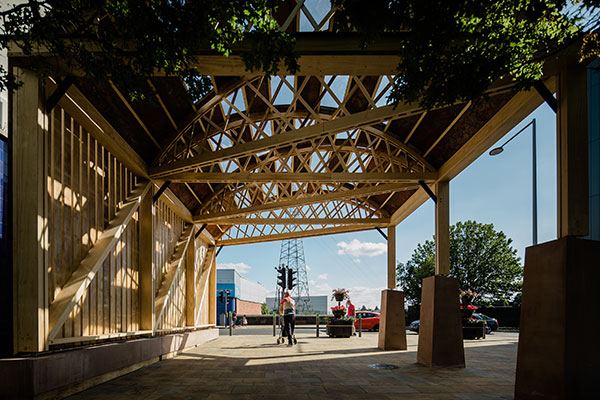
SMALL PROJECT – Built: East Pavilion
Built: East Pavilion is this year's Small Project winner. Judge David Morley says: "We all know what a Belfast sink is but few of us knew what a Belfast truss was until we were presented with this project. This modest project deserves recognition for how it uses timber to positively engage the community as a flexible place to move through, meet, mend bicycles or, initially, to hold an exhibition to remind the community of its heritage."
The site has a rich industrial history, and the Belfast truss represents the area’s history of manufacturing ingenuity. Originally designed to make use of waste ship building timber, the Belfast truss also inspired the team to make careful use of resources. Traditional craft skills combined with innovative technologies created bespoke building components that could be rapidly assembled on site. 1:1 scale prototypes were CNC produced to develop the design of each truss and joint. The entire roof structure was assembled in the factory before being dismantled and transported to site.
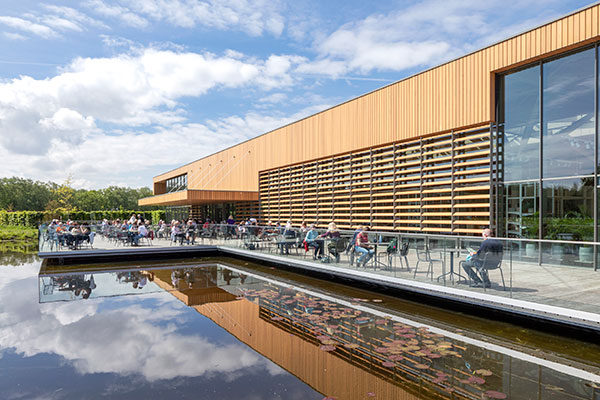
STRUCTURAL AWARD – The Welcome Building RHS Garden Bridgewater
The Structural Award winner is The Welcome Building RHS Garden Bridgewater, chosen from all the shortlisted buildings. Judge Andrew Lawrence commented: “An important new public building that uses the well detailed timber structure as the centrepiece of the architecture. The structural solution provides for the necessary long spans and openness, while creating a warm and dramatic interior space.”
The design is a horizontal composition that responds to a commanding horizon defined by the elevated canal and low-lying landscape, creating a linear strike in the landscape. All public elements are contained under a single overarching glulam timber diagrid, supported on structural glulam trees. The roof extends beyond the enclosure to the north and south, blurring the edge between building and landscape, where it turns up and down at its edge, responding to the location of entrances, expressing specific uses, framing views, and forming solar shading.
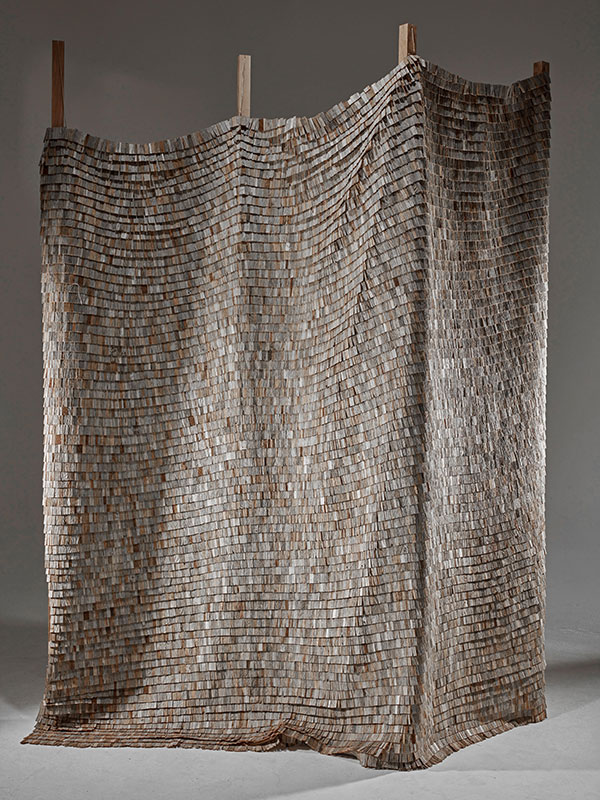
FURNITURE & PRODUCT COMPETITION – Bespoke – Gayles Farm 5
Gayles Farm 5 is this year's Bespoke winner. The judges were impressed by the piece's sculptural presence and how it celebrates movement. It highlights the preciousness of the material and draws the viewer in to examine its form and the quality of the individual pieces. This room divider was created to further Wycliffe’s exploration of textile techniques and characteristics using wood.
The piece has a flowing appearance, made up of thousands of small oak tiles glued to an open weave cotton twill. The wooden curtain is hung on a hinged, three panelled oak frame with hemp rope and cleats and can be height adjusted. The form is dictated by how the tile construction hangs over the supporting uprights, like a sail held by a mast. The tiles were cut from discarded oak fencing retrieved from the South Downs. The variety of colours and textures is explained by the different ways the timber reacted to weathering. The piece displays the many wonderful ways that timber responds to its environment.
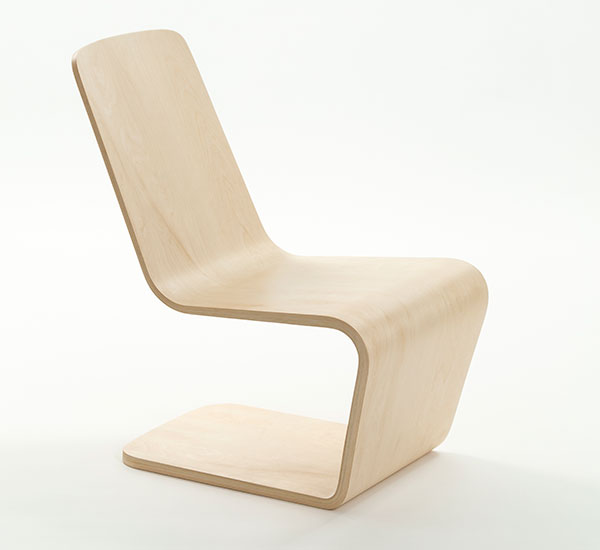
FURNITURE & PRODUCT COMPETITION – Production – Iso-Lounge Chair
Iso-Lounge Chair was selected as this year’s Production winner. The Furniture & Product judges are particularly impressed by the standard of projects in this category. The judges praised the Iso-Lounge Chair’s accomplished making and extreme comfort. Judge Corinne Julius comments, "It has surprising merit in that it is a piece of sculpture that disappears when sat on." Jasper Morrison looked to Isokon’s archives and was particularly inspired by the brand’s original logo, Gerald Summers’ Bent Plywood chair with its single flowing plywood surface, and Rietveldt’s Zig-Zag chair.
Iso-Lounge’s cutting-edge design started life as a single sketch, where the hand flowed from the back of the seat to the floor. Plywood was the only choice of material to follow the curve of the cantilevered design. The cantilever relies on highly technical production to create balance and support. More than four complete prototypes, alongside many prototype sections, were made over the course of a year to create a piece that offers total support and maximum comfort. Where strength is needed, there are more layers.
Where it needs to flex, there are fewer. The chair has been honed to be incredibly responsive. The orientation of the veneer layers and their thickness was tested over many months to push plywood to its limits. A very simple basis of an idea has been executed it as purely as possible. The chair is constructed from a single pressing consisting of 16 layers of veneer. Integral to the chair is the delicately curved back and tapering seat, created by machining the individual layers to a feather edge.
For further information on the Wood Awards, see www.woodawards.com.
- Log in or register to post comments
